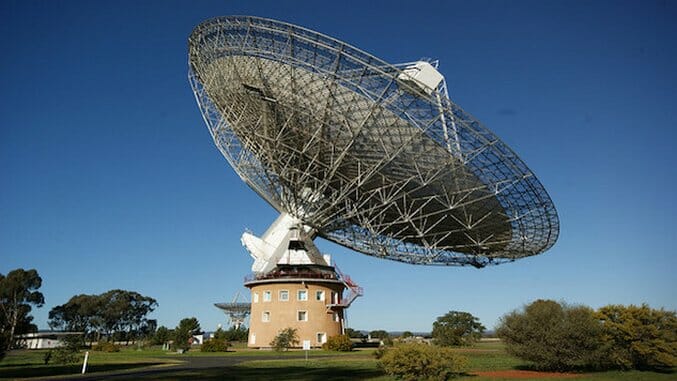Introducing Endless Mode: A New Games & Anime Site from Paste
A powerful burst of radio waves—known, appropriately as a fast radio burst—has been captured by the Parkes radio telescope in Australia is the brightest ever observed.
Fast radio bursts are incredibly difficult to capture by telescopes on Earth as they flash for fractions of a second before disappearing. The exact cause of this phenomena is unexplained but speculators have suggested everything from evaporating black holes to alien communication.
Alien communication theory aside, according to National Geographic, a recent burst captured by the Parkes telescope in southern Australia has allowed astronomers to more clearly understand where the burst came from.
The burst, named FRB 150807, was the brightest ever recorded and gave researchers the information they needed to identify where it originated and how much energy was contained in each burst.
Because FRB 150807 was so bright, it lit up two detectors in the Parkes telescope and the California Institute of Technology’s Vikram Ravi and his team were able to pinpoint the region of the sky where they believe the burst originated. Upon examining the area, they discovered a handful of six galaxies and some bright stars.
Though it is uncertain whether or not the burst came from one of these galaxies, it is clear that FRB 150807 did not come from the Milky Way galaxy. In fact, this discovery has allowed astronomers to determine that the majority of bursts could not come from the Milky Way galaxy, though the cause of these intense explosions is still unknown.
Two new telescopes, which may come online as early as 2017, may help in the search for more radio bursts and allow scientists to further study the incredible phenomenon.
Understanding the cause of these blasts will take much more extensive research, but in the meantime these explosions can be used to map intergalactic space. During the short time they light up the sky, the flashes help astronomers study intergalactic material and the magnetic fields through which the burst traveled.
Image: Ian Sutton, CC-BY
Lauren Leising is a freelance writer based in Athens, Georgia.
